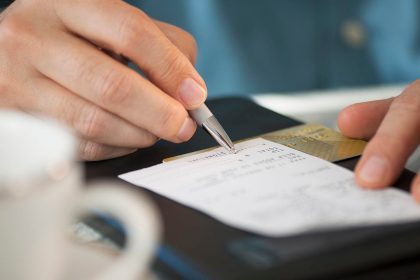Klaus Vedfelt/DigitalVision/Getty Images
Key takeaways
- If you have poor credit and are interested in a new credit card, check your credit score first and consider which type of card would be best as you work to use credit responsibly.
- A secured card can help you build or rebuild your credit. They typically require lower credit scores to qualify and may let you upgrade to an unsecured card with responsible use.
- You could also become an authorized user on someone else’s credit card, which allows you to use the card without undergoing a credit check. This can help build your credit.
Getting access to credit can be tricky if you have a bad credit score. But the best way to improve your credit score is by proving you can use credit responsibly. Knowing how to get a credit card with bad credit can help you start rebuilding your credit.
In addition, there are perks to having at least one credit card in your wallet. Credit cards offer the convenience of making purchases right away and paying them off later — and if you pay off your balance before the due date, you usually won’t pay interest. Many credit cards also offer rewards, consumer protections and a higher level of security against fraud than debit cards.
If you’re wondering whether credit is in the cards for you, the answer is probably yes — you likely can get a credit card with bad credit. First, take a close look at your credit. Then, consider which card is right for you.
1. Keep an eye on your credit score
Even if you know your credit score is less than ideal, check your exact score to determine what range you fall within. You might learn that you actually have fair credit, which can qualify you for more credit cards than if you find yourself with a poor credit score.
Knowing where your credit score stands can also help you avoid applying for cards you’re not likely to qualify for. Most credit card applications trigger a hard credit inquiry, which typically drops your score by a few points, so it’s a good idea to be selective with your applications.
You can check your credit score for free in a couple of different ways:
- Many credit card issuers — including American Express, Bank of America, Capital One, Chase, Discover and Wells Fargo — offer free credit score checks. Some issuers offer it to cardholders, while others let anyone use the service.
- Experian, a credit bureau, lets you check your FICO Score 8 for free. You can also purchase your score from any of the three major credit bureaus — Experian, Equifax and TransUnion — or FICO.
- AnnualCreditReport.com lets you access a free copy of your credit reports from the three credit bureaus weekly. While it won’t show your actual score, your credit report can give you an idea of what’s being factored into your score and let you check for any inaccuracies.
2. Apply for a secured credit card
A secured credit card is a tool that can help people who want to establish or rebuild their credit. They work by requiring an upfront security deposit, usually between $50 and $200. The line of credit you get is often equal to the deposit amount, so if you make a $200 deposit, your secured credit card is likely to come with a $200 credit limit.
If you’re approved for a secured credit card, prioritize on-time payments each month and avoid exceeding your limit. To build your credit score and graduate to an unsecured card, you’ll need to prove that you can manage small amounts of credit responsibly. Just make sure the card issuer reports your payments to the major credit bureaus before signing up for the card in the first place.
Pros of secured credit cards
- Access to credit for those with a low credit score or no credit history
- Credit score improvement through on-time payments and responsible credit use
- Opportunity to graduate to a traditional, unsecured credit card later on
Cons of secured credit cards
- Security deposit required
- Low credit limit
- High interest rates if you carry a balance
- Limited opportunities to earn rewards or take advantage of other perks
- May not report card activity to the major credit bureaus
3. Consider a store credit card
If you’re wondering how to get a credit card with bad credit, the answer might be as close as your nearest checkout lane. Retail credit cards tend to be easier to qualify for, even if your credit isn’t very good.
That said, just because retailers offer credit cards for people with bad credit doesn’t mean store credit cards are your best option. Most store cards charge much higher interest rates than other credit cards, and might include a deferred interest plan that costs you more money than you realize.
If you’re thinking about applying for a store card, read our guide on whether store cards are worth it.
Pros of retail credit cards
- Good approval odds, even with poor credit
- Opportunity to build your credit score through responsible use
- Store discounts and rewards
Cons of retail credit cards
- High interest rates
- Low credit limit
- Limited spending and rewards at specific stores
4. Become an authorized user on someone else’s card
One final way to build your credit score while practicing using credit is to become an authorized user on a trusted family member or friend’s credit card. As an authorized user, you’ll be added to their credit card account and can use the credit card to make purchases, but you won’t be on the hook for making payments.
Being an authorized user lets you piggyback on someone else’s good credit habits. As long as the card issuer reports authorized users’ card activity to the credit bureaus, the card’s on-time payments and low credit utilization could improve your credit score.
To become an authorized user, ask someone you trust — and who trusts you — if they’ll add you to their credit card. Just make sure to discuss any expectations and spending limits.
Pros of becoming an authorized user
- Opportunity to build credit without the responsibility of your own credit card
- No hard credit check required
Cons of becoming an authorized user
- Potential to hurt your credit if the primary cardholder doesn’t use the card responsibly
- Potential negative impact to your relationship with the primary cardholder if you make mistakes with the card
- Rewards officially belong to the primary cardholder
What to watch out for when applying for a credit card with bad credit
If you do plan to apply for a credit card with bad credit, keep the following cautions in mind.
- Not getting preapproved: Many card issuers offer a preapproval option that lets you find out if you’re qualified for a card before you apply. It doesn’t run a hard credit check, so it won’t impact your score. This way, you can apply only for cards you know you’ll probably get.
- Applying for too many cards at once: Most credit card applications require a hard credit inquiry, which can temporarily ding your credit score. Applying for multiple cards in a short period of time can be a red flag to issuers and lower your score.
- High interest rates or annual fees: Some subprime credit cards, especially unsecured cards, may come with much higher interest rates than other cards or charge an annual fee. Before you apply for a card for bad credit, make sure to read the fine print and make sure you’re comfortable with the terms.
- Not using credit responsibly: Building credit takes time, and misuse of any new credit will further damage your credit score. Prioritize on-time payments and not getting too close to your credit limit in order to improve your credit.
FAQs about getting a card with bad credit
-
The minimum score to get a credit card varies by card. You can find options for people with bad credit and even no credit — typically in the form of a secured or student card.
-
Yes, it’s possible to get an unsecured credit card with bad credit, including a score of 550. But the higher your score, the better the options available to you — including rewards rates, interest rates and annual fees.
-
Improving your score comes down to consistently paying your existing bills on time, keeping your credit utilization ratio low and practicing other healthy credit card habits. If you don’t own a credit card, things like a credit builder loan or personal loan can help build your credit history. Just be sure not to borrow more than you can comfortably pay off.
The bottom line
Bad credit can limit your credit card options, but there are still ways to access credit and start rebuilding your credit score. First, check your credit score to make sure you actually have bad credit. Then, you can apply for a card in your credit range or see if you can become an authorized user on someone else’s card. Once you have a card, prioritize using it responsibly, borrowing only what you can afford and paying your balance on time each month.
Read the full article here

















